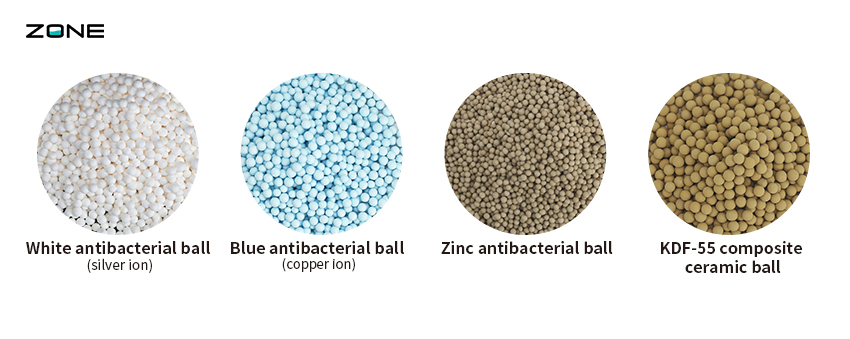Common 4 antibacterial media in the field of water treatment
what is the antibacterial mediain in water treatment?
Antibacterial particles are a material that can kill or inhibit bacteria in water, and are often used in filter elements or carbon rods of water purification equipment. Special antibacterial particles for carbon rods are composed of natural inorganic antibacterial ingredients; according to the characteristics of activated carbon rods, adopt an Antibacterial material without any chemical bactericide, which is customized with a special process, has continuous and stable slow-release characteristics, and the antibacterial effect is longer; the product itself has simple ingredients and is non-irritating, and can effectively eliminate 650 kinds of bacteria and viruses. The product Widely used in antibacterial carbon rods.
What is the most common antibacterial??
- Silver ion is a metal ion with broad-spectrum antibacterial activity. It can interact with bacterial cell walls, membranes, enzymes and other structures to destroy its metabolism and growth, thereby achieving the purpose of sterilization. Silver ions can exist in water in the form of nano-silver or silver compounds, but their properties and effects are different.
- Copper ion is a commonly used inorganic antibacterial agent, which can be added to water to kill or inhibit harmful microorganisms such as bacteria, viruses, and fungi in water, so as to ensure the safety and sanitation of water quality. Copper ions can also be compounded with other materials to make a coating or film with antibacterial ability, which is coated on the surface of water treatment equipment to prevent corrosion and pollution of the equipment. The antibacterial effect of copper ions is related to its concentration, contact time, water temperature, pH value and other factors. Generally speaking, the higher the concentration, the longer the contact time, the higher the water temperature, and the lower the pH value, the better the antibacterial effect.
- Zinc ion is a broad-spectrum antibacterial agent, which can not only effectively inhibit bacteria, but also inhibit the growth of fungi such as mold and algae. Zinc ions can interact with the zinc finger structure of the virus to block the replication of the virus in the host cell, thus possessing antiviral ability. Zinc ions can also be combined with inorganic materials such as zinc oxide to make a coating or film with photocatalytic properties, using free radicals generated by light to inactivate viruses.
-
KDF55 is a high-purity copper-zinc particle that can reduce pollutants in water through oxidation-reduction reactions. It is mainly used to remove or reduce residual chlorine and water-soluble heavy metals in water. KDF55 can also control the formation of bacteria, algae, fungus and scale in water, prolonging the life of water treatment system. KDF55 can be used in conjunction with other filter materials such as activated carbon, ion exchange resin, carbon block filter elements, etc. to improve the filtration effect and economy.

There are other antibacterial media that can be used for water treatment, such as Titanium dioxide, graphene oxide, etc. However, some challenges remain in using these media, such as their stability, toxicity, cost, and environmental impact.
RELATED NEWS
CATEGORIES
- Alkaline Water Media
- Fluoride Removal Products
- ORP Antioxidant Hydrogen Media
- Fluoride Removal News
- Remove Chlroine Media
- Antibacterial Media
- Mineral Water Media
- Remove Fluoride Media
- Antiscalant Media
- KDF Media
- Actived Water Media
- Purified Water Media
- Soften Water Media
- Condensate PH Neutralizer Media
- Activated Carbon Block Filter Media